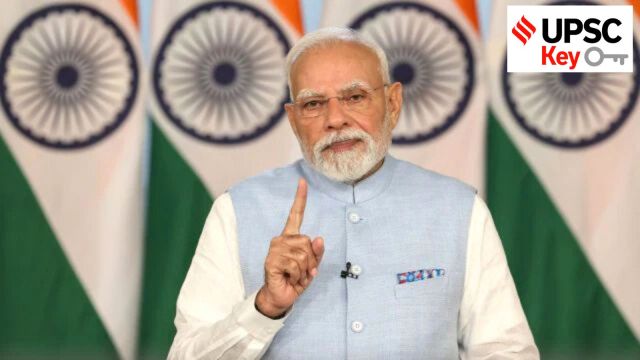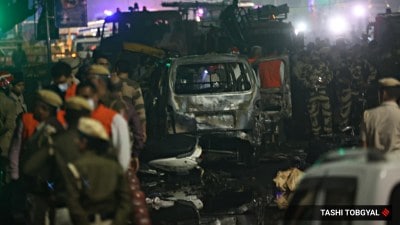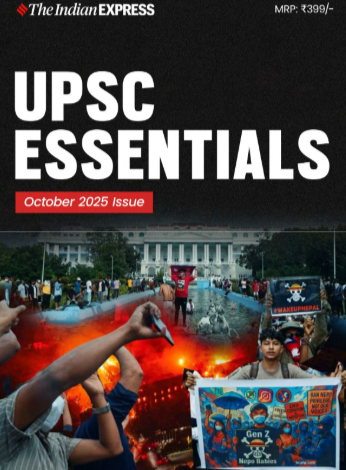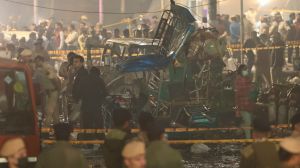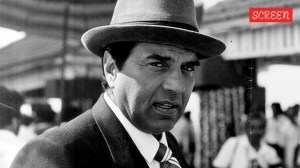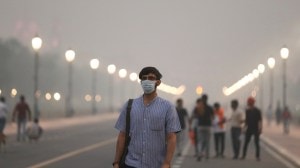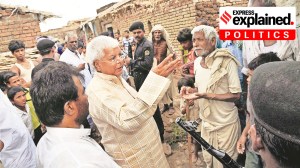
Preliminary Examination: Current events of national importance, Economic and social development.
Story continues below this ad
Mains Examination: General Studies- II, III: Government policies and interventions, Indian Economy and issues relating to planning, mobilisation of resources, growth, development and employment.
What’s the ongoing story: Steep discounts, extra grammage, or other deals such as shopping vouchers — companies have tried to entice customers in several ways ahead of the rollout of GST 2.0 effective from midnight, that is, September 22.
Key Points to Ponder:
— What is Goods and Services Tax (GST), and how does it work?
— What is the objective of introducing next-generation reforms?
— What are the key GST 2.0 institutional reforms?
— How will the new GST rates boost consumption and benefit the Indian economy?
Story continues below this ad
— What are the various tax slabs before and after the reform?
— What is the tax system in India?
— What is input tax credit?
— What is the role and function of the GST council?
— How are decisions taken in the GST council?
Key Takeaways:
— While several companies announced their price cuts in the run-up to the sweeping rate reduction for over 375 common-use goods after the 56th Goods and Services Tax (GST) Council meeting on September 3, others are expected to follow suit Monday onwards, which means lower prices are here to stay.
— With the government urging corporates to pass on the entire benefits of the GST rate reductions to the end-consumers and the Finance Ministry set to keep track of monthly price changes sourced from its field GST officers, companies don’t have much room not to do so.
Story continues below this ad
— While smaller enterprises and auto dealers have flagged concerns about some transitional issues such as accumulation of unused input tax credit, early indications of the benefits getting passed on to the consumers to a large extent are positive.
— Over the last few days, companies have gone on an advertising blitz to show how much they will be reducing the prices of their goods once the lower GST rates come into effect. The major announcements have come in the Fast Moving Consumer Goods (FMCG) space, especially for food items that are being exempted or falling in the 5 per cent GST slab.
— “This has been a big push moment for overall consumption demand,” economists from Bank of Baroda said in a report on September 10. “The real gain to consumers through lower inflation is significant. This opens more scope to even re-route consumption to savings and investment.” According to them, the GST rate cuts and the consequent price reductions will further improve demand across segments that have already seen some revival in the current fiscal.
Do You Know:
— The GST came into effect in 2017 and was billed as an attempt to simplify the existing tax structure in India, where both the Centre and states levied multiple taxes, and to make it uniform.
Story continues below this ad
— The President set up the GST Council as a joint forum of the Centre and the states, under Article 279A (1) of the amended Constitution. It said that members of the Council include the Union Finance Minister (chairperson), and the Union Minister of State (Finance) from the Centre. Each state can nominate a minister in charge, of finance or taxation or any other minister, as a member.
Important decisions of the 56th GST Council
— With the aim of lowering tax burden on common people, easing blocked working capital, and facilitating ease of doing business with automated refunds and registration process, the 56th GST Council introduced rationalisation of the GST tax regime.
— With these reforms, the GST will now get rid of the multiplicity of slabs – 5 per cent, 12 per cent, 18 per cent and 28 per cent – with a broad two-slab structure – a merit rate of 5 per cent and a standard rate of 18 per cent – in addition to a special demerit rate of 40 per cent for super luxury, sin and demerit goods.
— The products that are considered harmful to society, which may cause harm to the health, or if they are harmful by a moral prism are called “Sin goods”. This includes alcohol, tobacco, gambling or betting, food products with high fat or sugar content, and so on. Such goods and services are tax higher in a bid to dissuade people from using them.
Other Important Articles Covering the same topic:
Story continues below this ad
📍Knowledge Nugget: What is GST Council, and what were key decisions taken during its 56th meeting? Here’s everything you need to know for UPSC exam
📍Explained: What is the GST Council, and what does it do?
Previous year UPSC Prelims Question Covering similar theme:
(1) What is/are the most likely advantages of implementing ‘Goods and Services Tax (GST)’? (UPSC CSE 2017)
1. It will replace multiple taxes collected by multiple authorities and will thus create a single market in India.
Story continues below this ad
2. It will drastically reduce the ‘Current Account Deficit’ of India and will enable it to increase its foreign exchange reserves.
3. It will enormously increase the growth and size of the economy of India and will enable it to overtake China in the near future.
Select the correct answer using the code given below:
(a) 1 only
(b) 2 and 3 only
(c) 1 and 3 only
(d) 1, 2 and 3
Previous year UPSC Mains Question Covering similar theme:
Enumerate the indirect taxes which have been subsumed in the Goods and Services Tax (GST) in India. Also, comment on the revenue implications of the GST introduced in India since July 2017. (UPSC CSE 2019)
Syllabus:
Preliminary Examination: Current events of national and international importance.
Story continues below this ad
Main Examination: General Studies-II, III: Bilateral, regional and global groupings and agreements involving India and/or affecting India’s interests. Security challenges and their management, Conservation, environmental pollution and degradation, environmental impact assessment.
What’s the ongoing story: The stalled Sawalkote dam on the Chenab, a river which is part of the Indus system, in Jammu and Kashmir, is back at the centre of India’s strategy to tap the river’s hydropower potential.
Key Points to Ponder:
— Read about the Chenab river.
— Know about the Sawalkote project and its significance.
— What are the issues and concerns associated with the Sawalkote project?
— What is the Indus Waters Treaty (IWT)?
— What are the “Eastern Rivers” and “Western Rivers” of the Indus system?
Story continues below this ad
— What is the dispute resolution process enshrined in the IWT?
— What are the strategic implications of India’s suspension of the Indus Waters Treaty?
— Read about the Kishanganga HEP on Kishenganga and the Ratle HEP on the Chenab.
— Map Work: the “Eastern Rivers” and “Western Rivers” of the Indus system
Key Takeaways:
— With the Indus Waters Treaty now in abeyance, the Environment Ministry’s expert panel will this week appraise NHPC’s 1,865 MW project, one of the largest on a western river, for grant of environmental clearance, according to official documents.
— The upcoming Expert Appraisal Committee (EAC) meeting is particularly significant for the project, with the panel set to decide whether to recommend clearance without cumulative impact and carrying capacity studies (CIA and CCS). These studies are generally seen as essential to gauge the long-term ecological and social impacts of large hydroelectric projects, and an exemption would effectively fast-track Sawalkote.
— On July 10, less than three months after suspension of the IWT, the Environment Ministry’s Forest Advisory Committee (FAC) – its clearance is required in parallel with EAC appraisal if forest land is to be diverted – granted an exemption from these studies at the request of the Ministries of Power and Home Affairs.

— While granting the exemption, the FAC had noted that though CIA and CCS studies are a prerequisite for considering forest clearances in a river basin, the Sawalkote project was initiated in 1984, and hence the guidelines only have “prospective applicability”. It said that since the guidelines on these studies were brought in 2013, they may not be retrospectively applied. The final forest clearance, though, is subject to environmental clearance.
— With the IWT in abeyance following the April 2025 Pahalgam terror attack, the government has pushed Sawalkote project as a strategic priority, already floating multiple tenders for its various components.
— The project will divert 846 hectares of forest in Udhampur, Mahore, Batote and Ramban. This will include cutting of 2,22,081 trees, with the maximum – 1,26,462 – to be felled in Ramban district. The project’s installed capacity will be 1,406 MW in Stage-I and 450 MW in Stage-II.
— The EAC recommended environmental clearance for Sawalkote HEP in January 2017. However, the final environmental clearance order was not issued since forest clearance had not been granted.
— Although it is described as a “run-of-river” scheme, Sawalkote entails construction of a 192.5-metre-high concrete gravity dam with a reservoir capacity of 530 million cubic metres spread over 1,159 hectares. This has been a contentious issue in the past.
— Hydrology experts and environmentalists from J&K and other parts of the country had written to the J&K State Pollution Control Board in January 2016, stating that it was “misleading” to term the project as “run-of-river” in its environmental impact assessment study.
— They had also pointed out that there is a “bumper-to-bumper” hydropower situation on Chenab with three projects already in operation – the 390-MW Dulhast project at Kishtwar, the 890-MW Baglihar at Ramban, and the 690-MW Salal project at Reasi.
Do You Know:
— The IWT was signed in Karachi on September 19, 1960, following nine years of negotiations between India and Pakistan. The Treaty has 12 Articles and 8 Annexures (from A to H).
— According to the provisions of the Treaty, all the water of the “Eastern Rivers” of the Indus system — Sutlej, Beas and Ravi — shall be available for the “unrestricted use” of India. Pakistan shall receive water from the “Western Rivers” — Indus, Jhelum, and Chenab.
— The Chenab River, the largest tributary of the Indus, has a length of 1,180 km in India. It is formed by the confluence of the Chandra and Bhaga rivers at Tandi in Keylong, Himachal Pradesh.
Other Important Articles Covering the same topic:
📍Indus River system and the debate on Indus Water Treaty
Previous year UPSC Prelims Question Covering similar theme:
(2) With reference to the Indus river system, of the following four rivers, three of them pour into one of them which joins the Indus directly. Among the following, which one is such a river that joins the Indus direct? (UPSC CSE 2021)
(a) Chenab
(b) Jhelum
(c) Ravi
(d) Satluj
(3) Arrange the following agreements between India and Pakistan in chronological order: (UPSC-CDS (II) – 2024)
1. Tashkent Declaration
2. Indus Water Treaty
3. Agreement on the Prohibition of Attack Against Each Other’s Nuclear Installations and Facilities
4. Agreement on Reducing the Risk from Accidents Relating to Nuclear Weapons
Select the correct answer using the code given below:
(a) 1, 2, 3, 4
(b) 2, 3, 4, 1
(c) 2, 1, 3, 4
(d) 1, 4, 2, 3
EXPRESS NETWORK
Syllabus:
Preliminary Examination: Current events of national and international importance.
Mains Examination: General Studies-II, III: Government policies and interventions for development in various sectors, Security challenges and their management in border areas.
What’s the ongoing story: In five weeks, 47 soldiers will walk out of a special BSF school in Madhya Pradesh as “drone commandos”. This is the first batch of the Drone Warfare School, set up by the force at its training institute in Tekanpur, as part of a wider plan to integrate drones on a large scale in the aftermath of Operation Sindoor.
Key Points to Ponder:
— Read about Operation Sindoor.
— What are unmanned aerial vehicles (UAVs)? How has it become significant in modern warfare?
— What are Kamikaze drones?
— How have drones become a key part of defence policy?
— Why is training soldiers to use drones considered important in modern warfare?
— Read about the Mission Sudarshan Chakra.
Key Takeaways:
— The school, inaugurated earlier this month, is training these personnel in flying drones, carrying out surveillance and combat, and countering other unmanned aerial vehicles (UAVs). It will next train a batch of senior officers in drone warfare strategy.
— “After Operation Sindoor and in the backdrop of the Russia-Ukraine war, we realized that the battle is no longer happening with tanks and guns, but aerial vehicles. Until now we were walking on the battlefield with LMGs (light machine guns) and rifles. Now, the drone has to become a personal weapon,” said Shamsher Singh, ADG, BSF Academy.
— The Drone Warfare School has two main courses: Drone Commandos (for personnel) and Drone Warriors (for officers). It has three wings: flying and piloting, tactics (for defensive and offensive operations), and research and development.
— “We are training our drone commandos in such a way that they are able to carry a drone like a weapon and use it to conduct surveillance and patrolling, neutralise other drones and drop a bomb if required,” said Shamsher Singh.
— The school is one of multiple steps being taken by the BSF ahead of the large-scale drone induction.
— It is working on collaborations with the Indian Institutes of Technology (IIT) at Delhi and Kanpur in developing indigenous drones, refitting them with weapons and bombs, and mounting high-resolution cameras for patrolling.
— To develop its own drones, the BSF has set up a Drone Technology Lab within the Rustam Ji Institute of Technology — its engineering institute at Tekanpur. The lab, officials said, is working with data and forensics gleaned from UAVs shot down at the India-Pakistan border.
— The BSF’s Police Technology Innovation Centre, too, is working on a project to use drones in offensive operations. The force has tied up with IIT Kanpur to forensically analyse captured drones and is working on a tie-up with IIT Delhi for the development of technology such as noiseless drones and weaponised UAVs.
Do You Know:
— The nature of warfare has undergone an irreversible shift. From boots on the ground and dogfights in the air to remote strikes from unmanned platforms and AI-driven decision cycles, war is now a contest of networks, autonomy, and lethality at machine speed. Nations that adapt to this shift will dominate; those that lag will perish in obsolescence.
— Manoj K Channan writes: In this evolving paradigm, four key assertions emerge. One, artillery (rockets/missiles) will dominate offensive operations. Two, air defence (AD) will become the primary defensive shield.
— Three, sappers will rise in operational relevance beyond mobility and countermobility. And four, the infantry and the armoured corps will execute decisive manoeuvres, shaped by strategic fires and autonomous systems.
— Unmanned Aerial Vehicles (UAV) are military aircraft that are guided autonomously, by remote control, or both and that carries sensors, target designators, offensive ordnance, or electronic transmitters designed to interfere with or destroy enemy targets.
— A variety of military drones have been used in the Russia-Ukraine war. After Operation Sindoor, the Army has sped up plans to bring in drones as a standard weapon at the battalion level. The BSF, too, is viewing drones as an integral part of operations — from patrolling to defensive and offensive uses.
Other Important Articles Covering the same topic:
📍Drone swarming to smarter war rooms: Army’s AI roadmap for ops by 2026-27
📍Warfare is going autonomous — India must catch up
Previous year UPSC Mains Question Covering similar theme:
The use of unmanned aerial vehicles (UAVs) by our adversaries across the borders. to ferry arms / ammunitions, drugs, etc., is a serious threat to the internal security. Comment on the measures being taken to tackle this threat. (UPSC CSE 2023)
EXPLAINED
Syllabus:
Preliminary Examination: Current events of national importance, Economic and Social Development
Mains Examination: General Studies-III: Indian Economy and issues relating to planning, mobilization, of resources, growth, development and employment.
What’s the ongoing story: Over the last week, two sets of inflation data were released by the government and both were heartening for Indian households. First came the retail inflation data on Friday, which showed that Consumer Price Index (CPI) based inflation stood at 2.07 per cent in August. Next, on Monday, was inflation based on the Wholesale Price Index (WPI), with prices up a mere 0.52 per cent from August 2024.
Key Points to Ponder:
— What is inflation? Is inflation good for the economy?
— Know the types of inflation, like moderate inflation, galloping inflation, hyperinflation, stagflation, deflation, core inflation, etc.
— What are the causes of inflation?
— What are the long-term, medium-term and short-term impacts of inflation?
— What is the Consumer Price Index (CPI)? How is it calculated?
— How is CPI different from Wholesale Price Index (WPI)?
— What is nominal GDP?
— What is the relation between inflation and GDP growth?
— How is low inflation trajectory not so good for the government balance sheet?
— What is the fiscal deficit ? How is it calculated?
Key Takeaways:
— However, while these subdued price increases are a boon for Indian consumers, they are a problem for the government and its Budget math.
— Inflation matters to the fiscal arithmetic via the GDP – the nominal GDP, to be precise. While the GDP growth figure usually cited is after adjusting for inflation to arrive at the ‘real GDP growth rate’, the number more relevant for the government’s accounts is the unadjusted, or nominal GDP.
— Data released last month showed India’s real GDP growth rate unexpectedly rose to a five-quarter high of 7.8 per cent in April-June. However, the ‘nominal’ GDP growth rate was at a three-quarter low of 8.8 per cent. And this is crucial, for it is lower than what the government expected.
— In the Union Budget for 2025-26, presented on February 1, the finance ministry had assumed that India’s nominal GDP in the current fiscal would be Rs 357 lakh crore, 10.1 per cent higher from the revised estimate of Rs 324 lakh crore for 2024-25. The growth in nominal GDP assumed in the Budget is important as it is used to guide how much tax collections may rise in the coming year.
— However, with inflation being low, nominal GDP growth has been weaker than anticipated so far this year – GDP, after all, is just the final value of goods and services in a year, and low growth in prices can lead to GDP growth being subdued even if production increases somewhat.
— The impact of weak price increases and nominal GDP growth is showing up in the government’s finances: latest data shows that in April-July, the central government’s gross tax revenue was up just 1 per cent year-on-year, while net tax revenue was down 7.5 per cent.
— “While the low inflation trajectory is good news for the consumers, it is not so good for the government balance sheet,” Paras Jasrai, an economist at India Ratings & Research, said. “Impact of slower GDP growth is already visible in government finances and tax collection growth trailing FY26 budget targets.”
— Meeting this nominal GDP number is important for two key indicators: the fiscal deficit and central government debt, both of which are measured as a percentage of the nominal GDP.
— Low inflation is not always bad when it comes to impacting nominal GDP growth. What matters is why its low. It’s best if prices are subdued because of oversupply and not weak demand.
Do You Know:
—The two most-often used inflation rates in the country are the wholesale price index (WPI) based inflation rate and the consumer price index (CPI) based inflation rate. The former is called the wholesale inflation rate and the latter is called the retail inflation rate.
— Both WPI and CPI are price indices. In other words, these are two different baskets of goods and services. The government assigns different weights to different goods and services based on what is relevant for those two types of consumers.
— The CPI-based inflation data is compiled by the Ministry of Statistics and Programme Implementation (or MoSPI) and the WPI-based inflation data is put together by the Department for Promotion of Industry and Internal Trade (or DPIIT).
Other Important Articles Covering the same topic:
📍Everyday Economics: What are WPI and CPI inflation rates?
Previous year UPSC Prelims Question Covering similar theme:
(4) Consider the following statements: (UPSC CSE 2020)
1. The weightage of food in Consumer Price Index (CPI) is higher than that in Wholesale Price Index (WPI).
2. The WPI does not capture changes in the prices of services, which CPI does.
3. The Reserve Bank of India has now adopted WPI as its key measure of inflation and to decide on changing the key policy rates.
Which of the statements given above is/are correct?
(a) 1 and 2 only
(b) 2 only
(c) 3 only
(d) 1, 2 and 3
Previous year UPSC Mains Question Covering similar theme:
Do you agree with the view that steady GDP growth and low inflation have left the Indian economy in good shape? Give reasons in support of your arguments. (UPSC CSE 2019)
Syllabus:
Preliminary Examination: Current events of national importance.
Mains Examination: General Studies-II: Indian Polity and Governance- Constitution of India, Public Policy, Rights Issues, Government Policies & Interventions.
What’s the ongoing story: Earlier this month, the Supreme Court directed 17 states and eight Union Territories (UTs), which are yet to frame rules for the registration of Sikh marriages under the Anand Marriage Act, 1909, to do so within four months.
Key Points to Ponder:
— What are the constitutional provisions safeguarding the rights of minorities in India?
— What is the Anand Marriage Act, 1909? Why was it enacted?
— What is Anand Karaj?
— Read about the Anand Marriage (Amendment) Act, 2012.
— What are the limitations of the Anand Marriage Act?
— How does the Anand Marriage Act reflect the balance between religious freedom and equality before the law?
— Read about the minority rights in India?
Key Takeaways:
— A Bench comprising Justices Vikram Nath and Sandeep Mehta said that until the rules are framed, states and UTs must accept and register Anand Karaj marriages under existing marriage registration laws.
— This judgment is meant to ensure that Sikh couples across India can legally register their marriages under their own religious tradition, a right that has not been uniformly available to them thus far. However, critics say that the Act itself is severely lacking, and as such, the apex court’s direction does not do anything to address lacunae.
— Anand Karaj, literally “blissful union”, is the prescribed form of marriage in the Sikh faith. The ceremony is conducted in the presence of the Guru Granth Sahib, the holy scripture of the Sikhs.
— To solemnise the marriage, the couple walks around the Guru Granth Sahib four times, as hymns, known as laavan, are recited. The four chosen verses, composed by Guru Ram Das, the fourth Sikh Guru, outline the spiritual journey of a married couple.
— In the early 20th century, efforts by the Sikh community for legal recognition of their distinct marriage ceremony, specifically, to differentiate it from Hindu rituals, led to the enactment of the Anand Marriage Act in 1909.
— The Act, only a page long, served one primary purpose: to legally sanctify all marriages solemnised through the Anand Karaj ceremony. Among other things, however, the original Act did not include provisions for the registration of these marriages.
— This gap was addressed over a century later with the Anand Marriage (Amendment) Act, 2012. The Amendment introduced Section 6, which directed state governments to create rules for the registration of Anand Karaj marriages. Once registered under the Act, a couple would not need to register their marriage under any other law.
— But more than a decade after the Amendment was passed, most States and UTs had still not framed rules for registration of Anand Karaj marriages.
— Earlier this month, the SC addressed this gap and issued a comprehensive set of directions to ensure the law is implemented nationwide. The court imposed a “positive duty on every State Government to create a workable registration machinery”.
— Moreover, the court made it clear that no application for registration can be refused solely on the ground that the state has not yet notified the rules.
— In reality, most Sikh couples today are constrained to register their marriages under the Hindu Marriage Act, 1955 which also recognises Sikh marriages. As such, neither the original Act nor the 2012 Amendment nor even the latest SC directions address longstanding concerns of the Sikh community about maintaining distinct identity of religion.
— For one, while the Act provides a framework for registration, it does not include provisions for divorce or other matrimonial disputes. As a result, Sikhs seeking divorce must turn to the Hindu Marriage Act 1955 to dissolve their marriage. This was an issue that was flagged in 2012, when the Amendment was brought in.
Other Important Articles Covering the same topic:
📍SC to states, UTs: Notify rules for Sikh marriage registration in 4 months
THE EDITORIAL PAGE
Syllabus:
Preliminary Examination: Current events of national and international importance.
Mains Examination: General Studies-II, III: Bilateral, regional and global groupings and agreements involving India and/or affecting India’s interests, Indian economy.
What’s the ongoing story: Kanti Bajpai writes- “Prime Minister Narendra Modi is right. One of the greatest dangers facing India is the country’s dependence on foreign countries, he said while addressing an event in Bhavnagar, Gujarat on September 20. For all the talk of strategic autonomy and multi-alignment, what we are faced with is the opposite — strategic and multi-dependence. Our governments, our businesses, and we ourselves, as Indians, have contributed to the state we find ourselves in with China, Russia, and the US. We seem to be in a foreign policy corner.”
Key Points to Ponder:
— What is the trend of India’s trade with the US, China and Russia?
— How does India’s dependence on the US, China and Russia limit India’s foreign policy?
— What is the H-1B visa programme?
— Why is the recent increase in the H-1B visa fee a matter of concern for India?
— What is a Green Card programme?
— What are the challenges faced by India’s current foreign policy?
— What is the status of India’s manufacturing sector?
— What steps should be taken to reduce India’s strategic dependence and build self-reliance in critical sectors?
Key Takeaways:
— “With China, we are dependent on a range of manufacturing products, from everyday household consumer items to commodities and capital goods…. As for commodities, India imports most of its rare earth metals, which are vital for batteries and other electronic devices, and polysilicon, wafers, and solar cells from China. We are also increasingly dependent on Chinese fertilisers and tunnel boring equipment…”
— “With Russia, we are heavily dependent on arms and oil. Our arms dependence is difficult to put an exact number on. Estimates vary from 60 to 70 per cent dependence in key platforms and systems including spares.…Major refineries in India are now heavily dependent on Russia’s supplies.”
— “With the US, we are dependent on four things — markets for our exports, H-1B visas for our professionals and student visas and Green Cards for our young, key military armaments and components (including GE engines for our indigenous fighter aircraft, the Tejas), and counterbalancing against China’s power in the Indo-Pacific. The US is our largest export destination. Indians in recent years have topped the list of H1-B visa recipients, up to 70 per cent of those issued.”
— “American arms and military technology are seen as vital for India’s defence modernisation, including assault rifles, helicopters, missiles, reconnaissance, cargo, and fighter aircraft, and unmanned aerial systems, among others. And whether we say it publicly or not, we do count on Washington to be a strategic backstop against Beijing in the Indo-Pacific.”
— “Dependence on these three powers means that we are in a tight corner. New Delhi cannot afford to offend China over the border and India’s relationship with the US beyond a point. It cannot offend Russia over the Ukraine war, its arms sales to China, and its burgeoning relationship with Pakistan. And it cannot annoy Moscow by stopping oil imports altogether either. Finally, it cannot offend the Americans over tariffs and India’s relations with China and Russia, as well as Iran, beyond a point.”
– “Our foreign policy difficulties have become clear ever since President Donald Trump declared war on India’s tariffs and oil imports from Russia. The American President’s actions have brought our overall dependence on China, Russia, and the US into sharp focus. This is as much of a wake-up call as the collapse of the Soviet Union and the country’s predicaments after the end of the Cold War were in 1989.”
— “The road ahead is clear enough, though travelling down that road will be even more difficult than the road of economic reforms in the 1990s. How do we fix our dependence over such a wide range of economic goods and other needs? As the prime minister noted, we require a revolution in manufacturing. Despite several changes rung in by the government, our manufacturing companies, in the private and public sector, are not rising to the challenge. The Indian economy, since the 1990s reforms, has averaged roughly 7 per cent GDP growth rates. Yet, our manufacturing sector stubbornly refuses to take off.
— “Manufacturing is not the only bottleneck – we desperately need various commodities including energy, rare earths, and APIs, and must diversify our suppliers of these plus increase domestic sourcing. We also need to diversify our exports. Above all, though, we need to galvanise the “animal spirits” of our manufacturers.”
Do You Know:
— The H-1B visa programme allows US employers to hire immigrant workers in specialty occupations that require “a high level of skill” and “at least a bachelor’s degree”, according to the US Department of Labour.
— The program was started in 1990, with the intention of helping “employers who cannot otherwise obtain needed business skills and abilities from the US workforce by authorising the temporary employment of qualified individuals who are not otherwise authorised to work in the United States”.
— The initial validity of the H-1B visa is up to three years. It can be extended once, for another three years, giving a total of up to six years in most cases.
— Currently, there is an annual numerical limit (regular cap) of 65,000 new statuses/ visas under this program each fiscal year, with an extra 20,000 visas available to those with a master’s degree or higher from a US university.
Other Important Articles Covering the same topic:
📍After 50% tariff, $100,000 annual fee for H-1B visa: Trump’s latest hits skilled Indian labour in US
📍Huge fee can potentially kill H-1B, but Delhi keeps its fingers crossed
UPSC Prelims Practice Question Covering similar theme:
(5) With reference to the H-1B visa program, consider the following statements:
1. It allows American employers to hire non-immigrant workers in specialty occupations that require a high level of skills.
2. There is no capping in the total number of new H-1B visas.
Which of the statement(s) given above is/are correct?
(a) 1 only
(b) 2 only
(c) Both 1 and 2
(d) Neither 1 Nor 2
Previous year UPSC Mains Question Covering similar theme:
The Indian diaspora has a decisive role to play in the politics and economy of America and European Countries.’ Comment with examples (UPSC CSE 2020)
|
ALSO IN NEWS
|
| What to expect at the UN General assembly this week |
World leaders gather in New York every September at the annual United Nations General Assembly, which on Tuesday begins its 80th session. The United Nations was formed in 1945 and today has 193 members. Leaders of two non-member observer states, known at the UN as the Holy See and the State of Palestine, and an observer member, the European Union, can also speak in UNGA. It is tradition for Brazil to always be the first member state to speak. This is because in the early years of the world body, Brazil stepped up to speak first. As host to the UN headquarters, the United States is the second country to address the General Assembly. The list is then based on hierarchy and on a first-come, first-served basis. Despite a voluntary 15-minute time limit, one of the longest speeches made was in 1960 by the Cuban leader Fidel Castro, who spoke for about four and a half hours. Libyan leader Muammar Gaddafi spoke for more than one and a half hours in 2009. This year’s theme is:“Better together: 80 years and more for peace, development and human rights.” |
| From Foodgrains to Cement: Like Passenger Services, Indian Railways Launches Time-Tabled Freight Trains |
The Railways has launched four freight trains that will run on a fixed, notified schedule, similar to passenger trains in a departure from the norm for goods services. The move aims to ensure reliable freight operations and more such trains will follow, said officials. |
| Govt to conduct study on ‘smog eating’ coatings on roads: Minister |
The Delhi government will conduct a time-bound feasibility study on the use of “smog-eating” photocatalytic coatings on roads, pavements and public spaces to reduce pollutants such as nitrogen dioxide (NO₂) and harmful hydrocarbons, Environment Minister Manjinder Singh Sirsa said on Sunday. Experts have noted that using titanium dioxide as a coating has its advantages for being low-cost and chemically stable. It is also known for its compatibility with traditional construction materials. It has been “demonstrated that TiO₂-based photocatalytically active construction materials can be useful for gaseous depollution and environmental cleaning processes”, a research in the journal Nanomaterials notes. |
| Britain, Canada & Australia recognise Palestine; Will not happen: Netanyahu |
Britain, Canada and Australia all recognised a Palestinian state on Sunday in a move borne out of frustration over the Gaza war and intended to promote a two-state solution, prompting a furious response from Israel. The decision by three major Western nations, which have been traditional allies of Israel, aligned them with about 140 other countries also backing the Palestinians’ aspiration to forge an independent homeland from the Israeli-occupied territories. |
Subscribe to our UPSC newsletter. Stay updated with the latest UPSC articles by joining our Telegram channel – Indian Express UPSC Hub, and follow us on Instagram and X.
🚨 Anniversary Special: Read the UPSC Essentials September 2025 special edition, celebrating two years of the magazine! Share your views and suggestions at manas.srivastava@indianexpress.com 🚨

